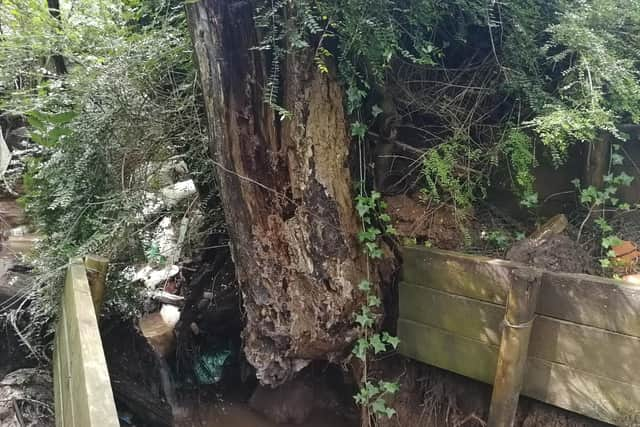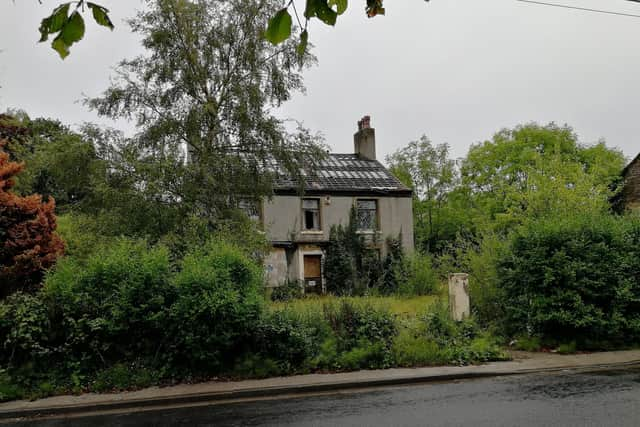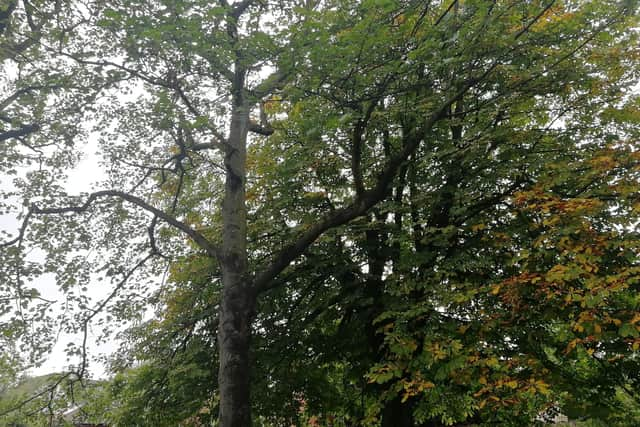Call for clarity over tree-cutting rules to avert neighbour feuds, as residents are warned more may be cut down under new safety regime
and live on Freeview channel 276
Lancashire County Council’s Labour opposition group leader Azhar Ali told a recent cabinet meeting that there needed to be a way of ensuring residents did not fall into the “trap” between the policies and practices of County Hall and the dozen district authorities in the region.
He was speaking as cabinet members adopted a new tree risk management strategy which will see the county council draw up a complete record of every tree for which it is responsible, along with details of how many are cut down each year.
Advertisement
Hide AdAdvertisement
Hide AdCounty Cllr Ali said that after a Pendle resident contacted him over a problematic tree on the road outside his home, he was told by county council officers that the householder could arrange to have it removed.


However, the individual’s next door neighbour then approached Pendle Council and “before you knew it, they’d put a TPO [tree preservation order] on it”, County Cllr Ali explained.
TPOs prevent trees which are subject to them from being chopped down or uprooted and are usually imposed by the councils that are the main planning authorities in an area – those being district councils like Preston, Wyre and Chorley within the county council’s patch.
The Labour group leader said that he was also aware of a case where a borough authority had advised a resident that a particular tree that was of concern to them could be removed – but that the individual was then prosecuted by Lancashire County Council for the action they took.
Advertisement
Hide AdAdvertisement
Hide Ad“There needs to be some mechanism where there’s an understanding of what’s right and what’s wrong, because ordinary people…get caught in the trap between Lancashire County Council and what [their] district council might say,” County Cllr Ali warned.


County Hall’s cabinet member for highways and transport, Charlie Edwards, accepted that trees could often become a bone of contention for residents, estimating that there were “hundreds” of tree-related issues across Lancashire.
However, he said that the new policy agreed by him and his colleagues was an important step that ensured the authority had in place ”a clear procedure that people can understand”.
“A simpler, more customer-focussed procedure and policy – which we [do] now have – I think [is] really going to move things forward,” County Cllr Edwards added.
Advertisement
Hide AdAdvertisement
Hide AdA key part of the new risk management strategy will be to extend the policy so that it covers all trees on land owned by the county council – not just those on or near roadsides, as was previously the case.


County Hall is also responsible, as the roads authority, for ensuring that trees growing on private land alongside vehicular sections of highway do not pose a hazard to road users. To that end, it can order the owners of such trees to take any necessary remedial action.
The new policy aims to mitigate to “as low a level as is reasonably practicable” the risk of personal injury as a result of falling trees and branches and trips and falls on footpaths that have been disturbed by tree roots. All tree owners are obliged to take reasonable care to ensure that any foreseeable hazards are identified and made safe – and the county council is held to no higher standard than that, meaning it does not have to be able to guarantee the safety of all of its trees.
There are around 10,000 tree-lined sections of road under County Hall’s control and several hundred non-highways sites containing trees.
Advertisement
Hide AdAdvertisement
Hide AdThe authority expects that its in-house team of arboricultural staff will initially be overwhelmed by the additional work generated by the new strategy – both as a result of “legacy” maintenance and work needed because of ash dieback disease.


It predicts that the spike in demand will be temporary, but will require the use of external experts to ensure that all work is completed to the necessary timescales – which can range from one day to one year depending on the assessed risk that a tree poses.
Cabinet member for environment and climate change Shaun Turner said that there were examples elsewhere in the country of councils not having such a comprehensive policy in place and it proving “very costly”. He also sought to reassure residents who may be concerned to witness trees being removed following an inspection that there was a “solid reason” for it.
“We do…have a tree-planting strategy as well, so where a tree is removed from a highway verge, for example, it may not be replaced [in the same spot], but [a new one may be planted] somewhere else,” County Cllr Turner said.
Advertisement
Hide AdAdvertisement
Hide AdThe new strategy notes that trees have evolved to cope with "losing limbs, breaking apart and being wounded and grow[ing] adaptively in response tothe environment around them", but that where trees and people co-exist, "there is a need to ensure that a tree’s natural processes do not pose a risk to the people and property around them".
However, the document stresses the "social and environmental value" of trees, adding: "Where reasonably practical, [trees] should be retained and allowed to complete their life cycle with minimal management interventions."
WHAT IS A TREE PRESERVATION ORDER?


Owners of trees subject to a tree preservation order (TPO) must not carry out or allow any prohibited work without the written consent of the local authority concerned.
A TPO prevents the cutting down, topping, lopping, uprooting and wilful damage or wilful destruction of protected trees.
Advertisement
Hide AdAdvertisement
Hide AdAccording to the government, orders should be used to “protect selected trees and woodlands if their removal would have a significant negative impact on the local environment and its enjoyment by the public”.
“Before authorities make or confirm an order they should be able to show that protection would bring a reasonable degree of public benefit in the present or future”, the government’s guidance adds.
Source: gov.uk
HOW TO RANK THE RISK FROM A TREE
Trees that are growing on – or are within falling distance of – all stretches of vehicle-carrying highway in the county council area will be subject to inspections every two years. Those planted on operational County Hall-owned land that is regularly used by the public will be assessed on a three-year cycle, while trees on non-operational land will be checked every five years.
The assessment of each tree against a "risk matrix" will determine what action needs to be taken and how quickly. Inspectors will consider the chance that a tree might fail - ranked low, medium or high - and the damage that could potentially be caused if it did. That impact ranges from "inconsequential” structural damage, through minor physical injury to loss of life or serious injury and "significant damage to property or obstruction of critical infrastructure".The proximity of a tree to roads, paths or structures will also be factored in, as will the likelihood of a "sensitive target" being present at the time of any tree failure.Most of the inspections will be carried out on foot, although some assessments of highway trees in rural areas will be undertaken from a slow-moving vehicle.
During the winter months, countryside officers, rangers and volunteer groups will be asked to be on the lookout for any storm damage to trees and report it.